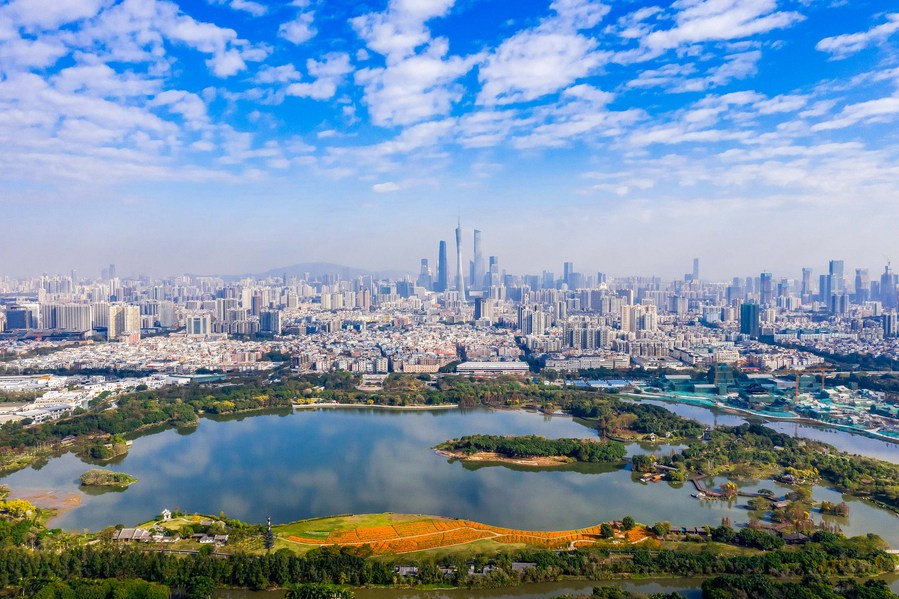Greater Bay Area a leading national city cluster
 0 Comment(s)
0 Comment(s) Print
Print E-mail China Daily, May 28, 2022
E-mail China Daily, May 28, 2022

China's five city clusters bring diversified real estate investment opportunities and finance, innovation and talents will lead the development of the Guangdong-Hong Kong-Macao Greater Bay Area, according to a report from international real estate service provider JLL published on Thursday.
The rapid development of China's top five city clusters (the Bay Area, Yangtze River Delta, Beijing-Tianjin-Hebei, Chengdu-Chongqing and the middle reaches of the Yangtze River) over the last 10 years has led the country's fortune, population and consumption power to be concentrated in these locales. This will boost the development and demand for office and retail space and bring more investment opportunities for alternative real estate such as industrial parks, long-term leasing apartment and elderly homes.
Data centers and industrial properties in the nearby cities would also attract investment, according to JLL's latest report "China 5: From World City to World City Cluster".
With the support of government policy, the five clusters are well-connected with efficient transport networks. The transportation network in the Bay Area is the most mature and has led to the development of the one-hour living circle model which has facilitated collaboration between cities in the area.
The development plan of 9+2 cities in the area is also unique among the clusters and enables it to play a greater role in the financial market. Hong Kong's two-way leading role will facilitate capital circulation between mainland cities and Hong Kong and provide funding for the expansion of new economy, innovation and technology firms. Many Hong Kong companies have invested in the areas of cross-border finance and professional qualification.
Shenzhen, which has 32 unicorns and accounts for over 60 percent of unicorns in the Bay Area, is leading the development of the area with its innovation industry. Over 40 percent of new startups are based in the area, while over 10 percent are from Shenzhen. Shenzhen and Guangzhou have more than 18,000 and 11,000 high-tech enterprises, respectively.
Recruitment data from Zhaopin, a mainland recruitment website, showed the population influx in the Bay Area reached 14.7 percent in 2021, ranking second in China's major city clusters after the Yangtze River Delta. The total population of the nine cities in the area has reached 78.01 million, 40 percent more than 10 years ago, with population growth higher than the average growth rate of 5.28 percent.
Nelson Wong, Head of Research at JLL in Greater China, said: "One of the important growth drivers for the Greater Bay Area is the accelerated integration of Hong Kong into the mainland. Closer collaboration enabled by more efficient flows in talent, capital, goods and information will undoubtedly create synergies and lift the overall growth potential of the region."
JLL has identified new indicators to measure the future competitiveness of the clusters, including education, talent, innovation, corporate activities, infrastructure, environment and livability.



 Add your comments...
Add your comments...

